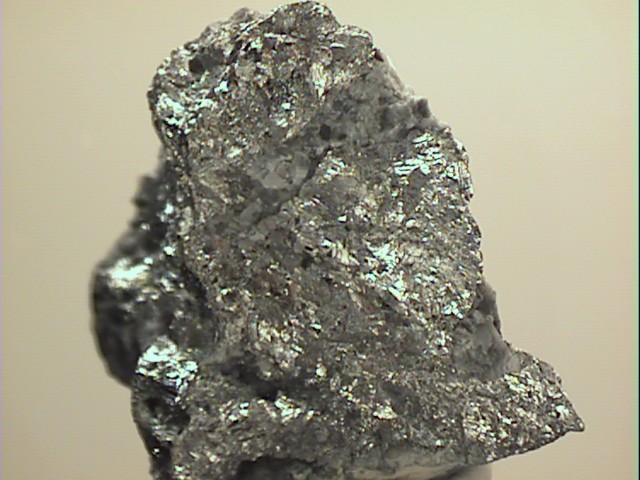
ANTIMONY
Specimen ant-15
$ 35.00
Dims: 0.86x0.72x0.33" (2.17x1.82x0.83cm)
Wt:
No. 19 Mine, Pribram, Czech Republic
This antimony specimen has a bright metallic luster and silvery color. It is clearly crystalline, although I see no natural crystal surfaces. Rather, there are some mamilary areas and a few cleavage planes visible, as well as a few small areas with indications of lamellar crystals. There is a vein of the host rock remaining, but I am not sure of its composition, as it is a translucent white (dirty or gray in places), without calcite's cleavage, or quartz's fracture, or albite's opacity. If anything, it has a rough fracture, and there is one tiny area that looks like oligoclase.
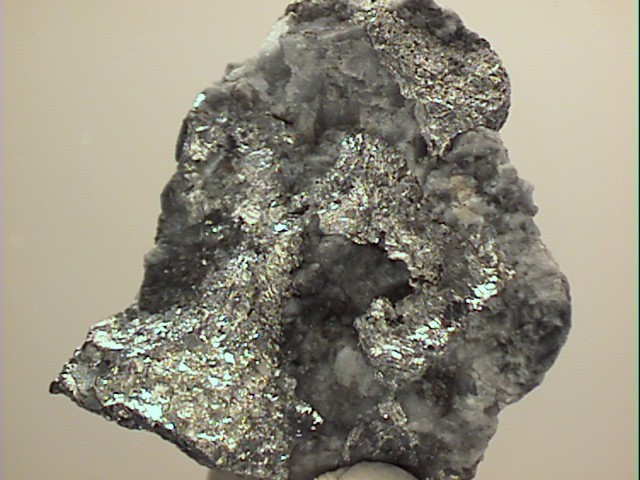
 Amethyst Galleries' Mineral Gallery MINERALS |
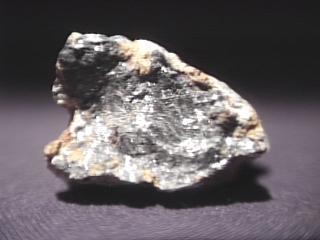
ANTIMONY specimen ant-1
$ 90.00
$ 90.00
Dims: 1.5" x 1.1" x 0.9" (3.8 x 2.8 x 2.3 cm)
Wt: 1.44 oz. (41.0 g)
Nuevo Tepache, Tepache, Sonora, Mexico
This rather simple specimen consists of a piece of massive Antimony that is partially coated with a rust-stained crust of what appears to be calcite. The Antimony has a silvery color and a bright metallic luster, and appears to have evidence of cleavage, but no definable crystal form. It is rather heavy for its size. I have not seen a specimen of native Antimony before this one; I believe that it is a rather rare occurrence.
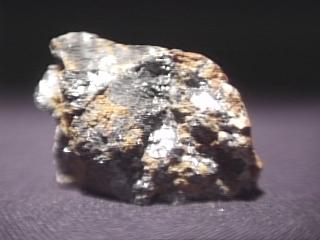

ant-1 ($ 90.00)
Nuevo Tepache, Tepache, Sonora, Mexico
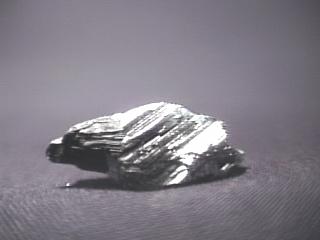
ANTIMONY specimen ant-2
$ 95.00
$ 95.00
Dims: 1.2" x 0.5" x 0.5" (3.0 x 1.3 x 1.3 cm)
Wt: 7.4 g
Kalliosalo, Seinaejoki, Oesterbottens, Laen, Finland
This bright specimen consists of what look like a few partial, intersecting crystals of native Antimony. However, I have been told that actual Antimony crystals are extremely rare, and that this specimen is likely a piece of massive Antimony that has undergone extensive cleavage. It has a very white, silvery coloration and one of the brightest metallic lusters that I have seen in any natural material. It is, of course, opaque, and shows many parallel growth striations and patterns on its surfaces. All of its surfaces are flat and appear to correspond to a crystal form, though a definite trigonal form cannot be determined.

ant-2 ($ 95.00)
Kalliosalo, Seinaejoki, Oesterbottens, Laen, Finland
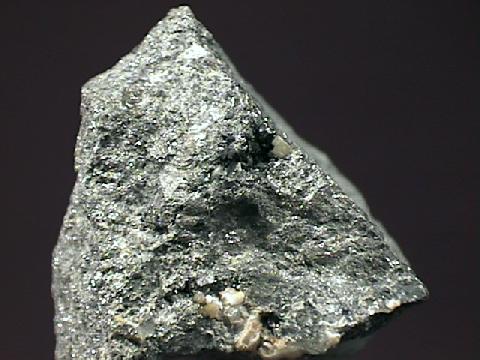
ANTIMONY specimen ant-3
$ 60.00
$ 60.00
Dims: 1.5" x 1.4" x 1.1" (3.8 x 3.6 x 2.8 cm)
Wt: 3.01 oz. (85.4 g)
Lac Nicolet Antimony Mine, Ham Sud Township, Quebec, Canada
This specimen's mass is made up almost entirely of native Antimony; however, the Antimony takes on 2 different forms, which occur in 2 layers. The topmost layer consists of semi-crystalline Antimony that shows a pale silvery color and a bright, metallic luster. These are likely not actual crystals, but cleaved surfaces of massive Antimony- however, the cleavage surfaces show definite crystalline tendencies. There is also what appears to be a tiny amount of calcite on the surface of this layer, but it also lacks any definite form. This layer rests upon a layer of strictly massive Antimony; it shows absolutely no crystal form, and upon first glance, one may wonder if it is even Antimony! However, there is a small amount of damage to the piece in the form of a scrape, wherein the silvery color and metallic luster show themselves. The rest of the surface shows a pale gray coloration and a luster that is more satiny than metallic. It is certainly the most massive and least expensive Antimony specimen that we have yet had available.


ant-3 ($ 60.00)
Lac Nicolet Antimony Mine, Ham Sud Township, Quebec, Canada
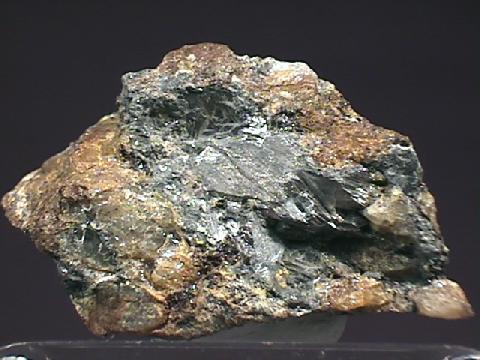
ANTIMONY specimen ant-4
$ 85.00
$ 85.00
Dims: 1.8" x 1.2" x 0.8" (4.6 x 3.1 x 0.8 cm)
Wt: 1.4 oz. (38.9 g)
Motril, Spain
This thumbnail specimen consists of at least 2 native Antimony formations that are embedded in a quartz matrix rock. They are only partly exposed, so it is difficult to judge their sizes. However, the one that appears to be the largest has visible dimensions of 0.6 x 0.4" (1.5 x 1.0 cm), and shows a small amount of fresh damage. Their intergrowth also prevents accurate study of their form, but they are likely not actual Antimony crystals, though their exposed and likely cleaved surfaces do show definite crystalline tendencies. Both have a bright, silvery-white color and a bright metallic luster, though one face appears to be slightly tarnished on the largest formation. The quartz host rock is either colored a dark gray due to its interaction with the Antimony, or it is a red-brown from rust-staining. It is massive and has no visible crystalliine form.

ant-4 ($ 85.00)
Motril, Spain
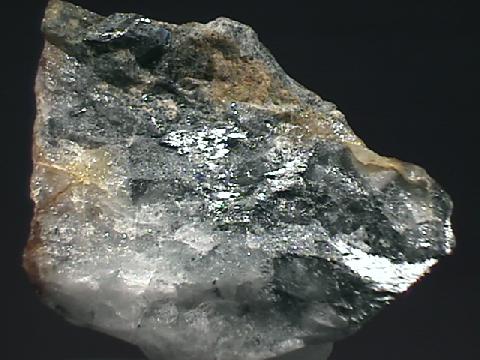
ANTIMONY specimen ant-5
$ 90.00
$ 90.00
Dims: 1.7 x 1.5 x 0.7" (4.3 x 3.8 x 1.8 cm)
Wt: 1.3 oz. (36.1 g)
Motril, Spain
One of only a few examples of Spanish minerals in our stock, this specimen consists of several veins of native Antimony that are trapped in a massive quartz matrix. The veins are likely massive and are only partly visible due to their intergrowth, but visible dimensions reach 1.0 x 0.7 x 0.6" (2.5 x 1.8 x 1.5 cm). The material shows definite crystalline tendencies, but no actual crystals are present. The element has the classic high density, silvery-white color and bright metallic luster of its specie. The host rock appears to be massive quart or quartzite that is partly rust-stained.


ant-5 ($ 90.00)
Motril, Spain
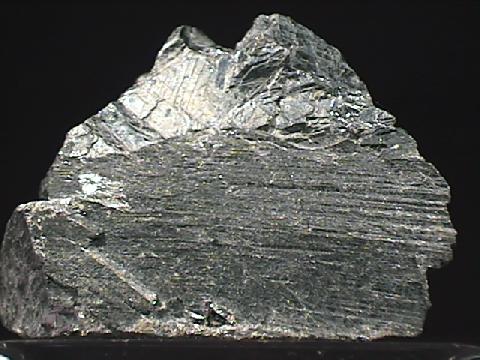
ANTIMONY specimen ant-6
$ 180.00
$ 180.00
Dims: 1.6 x 1.2 x 0.9" (4.1 x 3.0 x 2.3 cm)
Wt: 2.0 oz. (57.8 g)
Kalliosalo, Seinaejoki, Oesterbottens, Laen, Finland
This excellent little thumbnail specimen consists of at least 3 partly intergrown native Antimony "crystals". It is most likely, however, that these are merely massive formations that were broken and cleaved some time prior to their mining. The largest of these is much larger than the other two, and makes up the bulk of the specimen, with dimensions of 1.6 x 0.9 x 0.7" (4.1 x 2.3 x 1.8 cm). Though it does show noticeable damage, none of it is severe. It has a more crystalline appearance than the smaller formations, with well-defined edges and striated but clean faces. All have the bright silvery-white coloration and bright metallic luster that are characteristics of this element. There is no host rock present.
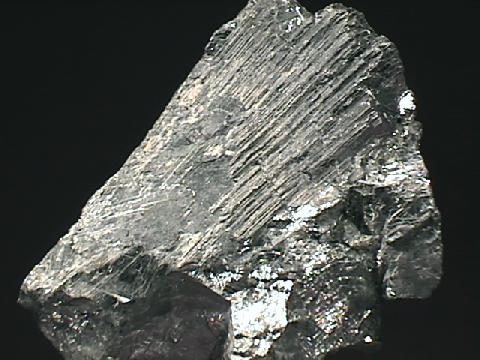

ant-6 ($180.00)
Kalliosalo, Seinaejoki, Oesterbottens, Laen, Finland

ANTIMONY specimen ant-7
$ 70.00
$ 70.00
Dims: 1.5 x 1.4 x 0.7" (3.8 x 3.6 x 1.8 cm)
Wt: 1.2 oz. (33.7 g)
Motril, Spain
The quartz host rock of this thumbnail specimen is permeated by several veins of massive Antimony. Though massive, the metal is not without form, as most of its visible surfaces have been subjected to cleavage. These surfaces show straight, sharp edges and smooth faces that possess a bright metallic luster. All of the Antimony has a bright silvery-gray coloration. The surrounding quartz host rock is colorless in some areas, but is stained a dark gray where it comes into contact with the Antimony, and is rust-stained in one area.

ant-7 ($ 70.00)
Motril, Spain
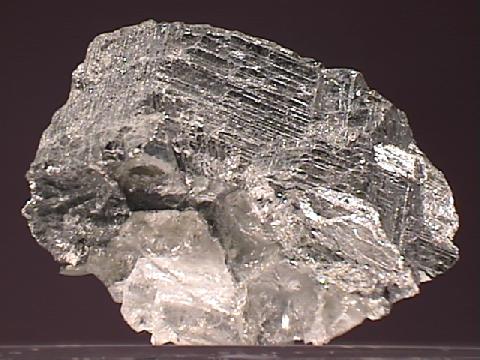
ANTIMONY specimen ant-8
$ 98.00
$ 98.00
Dims: 1.2 x 0.9 x 0.4" (3.0 x 2.3 x 1.0 cm)
Wt: 19.0 g
Kalliosalo, Seinaejoki, Oesterbottens, Laen, Finland
I have been told that Antimony specimens such as these are not actually crystalline, but rather are massive and show good cleavage. This specimen, however, might actually be a portion of a crystal. The Antimony is attached to a small amount of amorphous quartz and has the bright, silvery-white color and metallic luster that one expects on all faces except one. This singular face also shows a silvery-white coloration, but its luster is much, much duller than that of the other faces. It may likely be that this particular cleavage face was exposed to weathering, but the alternative is possible, too. Besides the quartz, there is no other material or host rock.

ant-8 ($ 98.00)
Kalliosalo, Seinaejoki, Oesterbottens, Laen, Finland
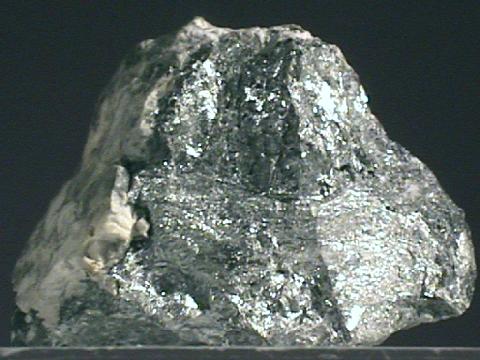
ANTIMONY specimen ant-9
$ 30.00
$ 30.00
Dims: 0.9 x 0.6 x 0.6" (2.2 x 1.6 x 1.4 cm)
Wt: 11.3 g
Erskine Creek Mining District, Kern County, California, U.S.A. (j)
This thumbnail specimen consists of a small chunk of native Antimony that is partly covered by a pale brown, stony crust. The Antimony shows the classic silvery-white color and metallic luster, and displays evidence of massive, lamellar, and compact and radiating habits. A few spots show a deep violet-red color, denoting the probable presence of kermesite.

ant-9 ($ 30.00)
Erskine Creek Mining District, Kern County, California, U.S.A. (j)
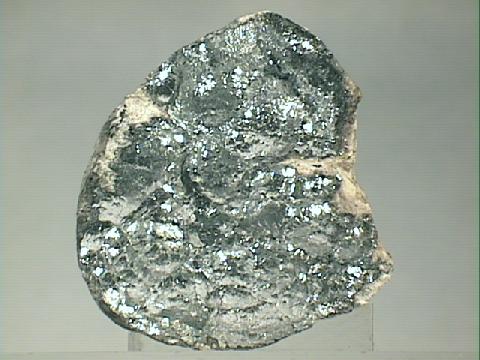
ANTIMONY specimen ant-10
$ 120.00
$ 120.00
Dims: 1.6 x 1.5 x 0.7" (4.1 x 3.8 x 1.7 cm)
Wt: 2.82 oz. (80.0 g)
Erskine Creek Mining District, Kern County, California, U.S.A. (j)
This hand specimen consists of a portion of an Antimony nodule. The outer surface of the nodule is covered with a dull, pale brown, stony crust that covers a core of nearly pure native Antimony. The Antimony has the standard bright, silvery-white color and bright metallic luster, and shows a gently undulating botryoidal habit. This habit is also visible on the reverse of the specimen, where a concave botryoidal pattern is visible on the tarnished surface. Given the smoothness of the crust, the nodule was likely subjected to water wear at some time.
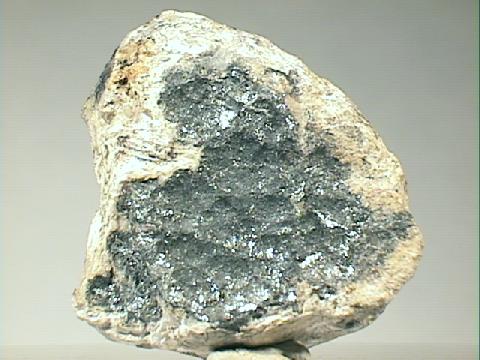

ant-10 ($120.00)
Erskine Creek Mining District, Kern County, California, U.S.A. (j)
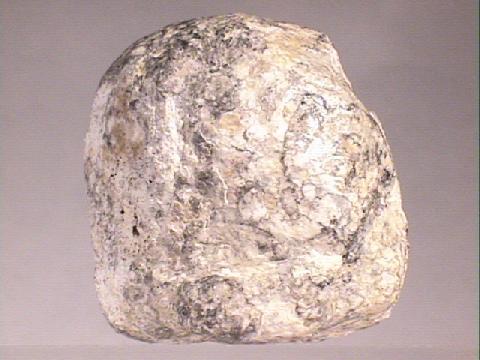
ANTIMONY specimen ant-11
$ 150.00
$ 150.00
Dims: 1.9 x 1.7 x 1.3" (4.8 x 4.2 x 3.4 cm)
Wt: 8.7 oz. (246 g)
Erskine Creek Mining District, Kern County, California, U.S.A. (j)
This hand specimen looks postively unimpressive upon examination, with its dull, pale brown surface and matte-to-waxy luster. However, its unusually high density betrays the fact that it is an undamaged, unbroken Antimony nodule. It is actually made up almost entirely of Antimony- the rough outer surface is caused by a thin, stony crust around the element. Breaking it open may reveal massive, lamellar, or botryoidal habits, and might yield some tiny, flattened kermesite sprays that formed in tiny crevices (I have one that has such sprays). One will not know until one breaks it open...
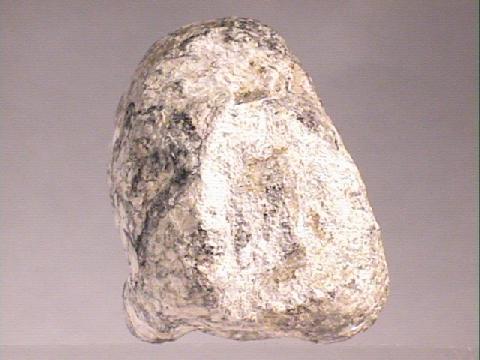

ant-11 ($150.00)
Erskine Creek Mining District, Kern County, California, U.S.A. (j)
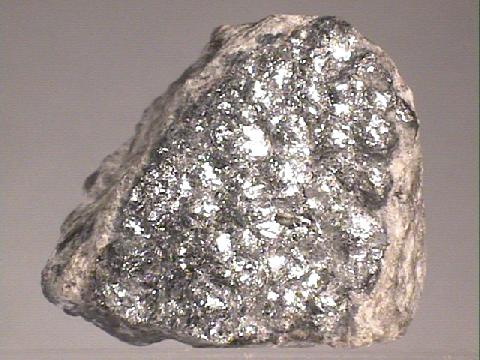
ANTIMONY specimen ant-12
$ 110.00
$ 110.00
Dims: 1.4 x 1.2 x 1.2" (3.6 x 3.1 x 3.1 cm)
Wt: 4.12 oz. (116.9 g)
Erskine Creek Mining District, Kern County, California, U.S.A. (j)
Part of a nodule of native Antimony comprises this small hand specimen. It shows considerable fresh breakage, a small amount of old breakage, and both massive and mammillary habits. The freshly-broken Antimony has the standard bright, silvery-white color and bright metallic luster. The older breakage shows a darker gray color and duller luster, and the stony crust has a tan color and dull, matte-to-waxy luster.
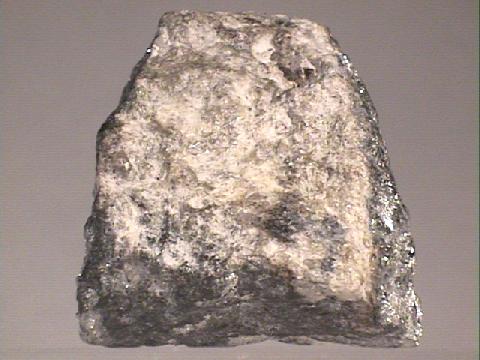

ant-12 ($110.00)
Erskine Creek Mining District, Kern County, California, U.S.A. (j)
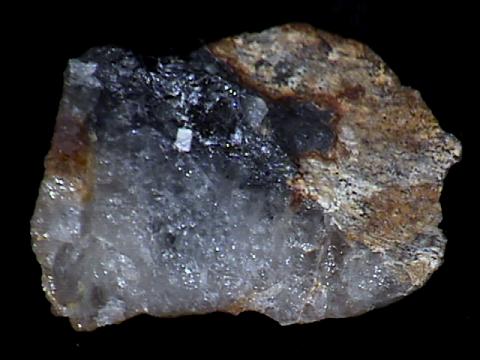
ANTIMONY specimen ant-13
$ 50.00
$ 50.00
Dims: 2.17x1.57x1.39" (5.51x4.00x3.52cm)
Wt: 2.10oz (59.3g)
Motril, Spain
This is a piece of a chunk of quartz broken open to reveal a core of native antimony. It has a bright metallic luster and a color somewhat like galena. The crystals either have a rhombohedral striations, cleavage lines, or more likely crystal growth pattern. Inside the antimony are a few smoky transparent crystals that look like anglesite, although I am not certain.
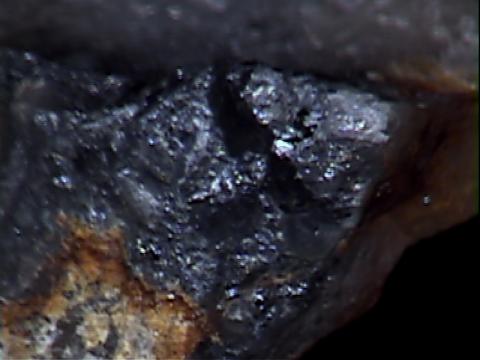

ant-13 ($ 50.00)
Motril, Spain
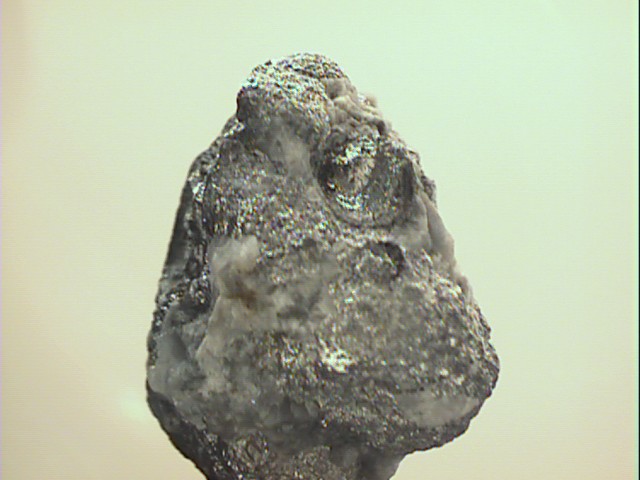
ANTIMONY specimen ant-14
$ 35.00
$ 35.00
Dims: 0.91x0.66x0.63" (2.32x1.69x1.60cm)
Wt: 0.56oz (16.0g)
No. 19 Mine, Pribram, Czech Republic
This is mostly antimony, with some intergrowths of a translucent, light-gray mineral (likely albite). The antimony, while mostly appearing massive, has two areas of distinctly lamellar habit, plus many smaller crystals that appear to show rhobohedral terminations. The color is silvery, with some areas tarnished to a darker gray (primarily in the crevices).
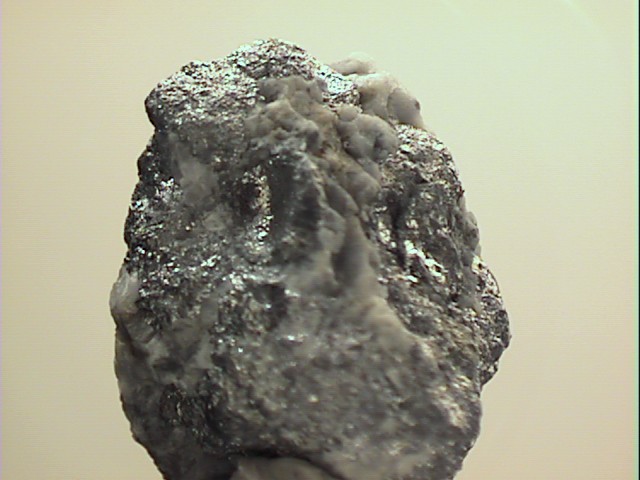

ant-14 ($ 35.00)
No. 19 Mine, Pribram, Czech Republic

ANTIMONY specimen ant-15
$ 35.00
$ 35.00
Dims: 0.86x0.72x0.33" (2.17x1.82x0.83cm)
Wt:
No. 19 Mine, Pribram, Czech Republic
This antimony specimen has a bright metallic luster and silvery color. It is clearly crystalline, although I see no natural crystal surfaces. Rather, there are some mamilary areas and a few cleavage planes visible, as well as a few small areas with indications of lamellar crystals. There is a vein of the host rock remaining, but I am not sure of its composition, as it is a translucent white (dirty or gray in places), without calcite's cleavage, or quartz's fracture, or albite's opacity. If anything, it has a rough fracture, and there is one tiny area that looks like oligoclase.


ant-15 ($ 35.00)
No. 19 Mine, Pribram, Czech Republic